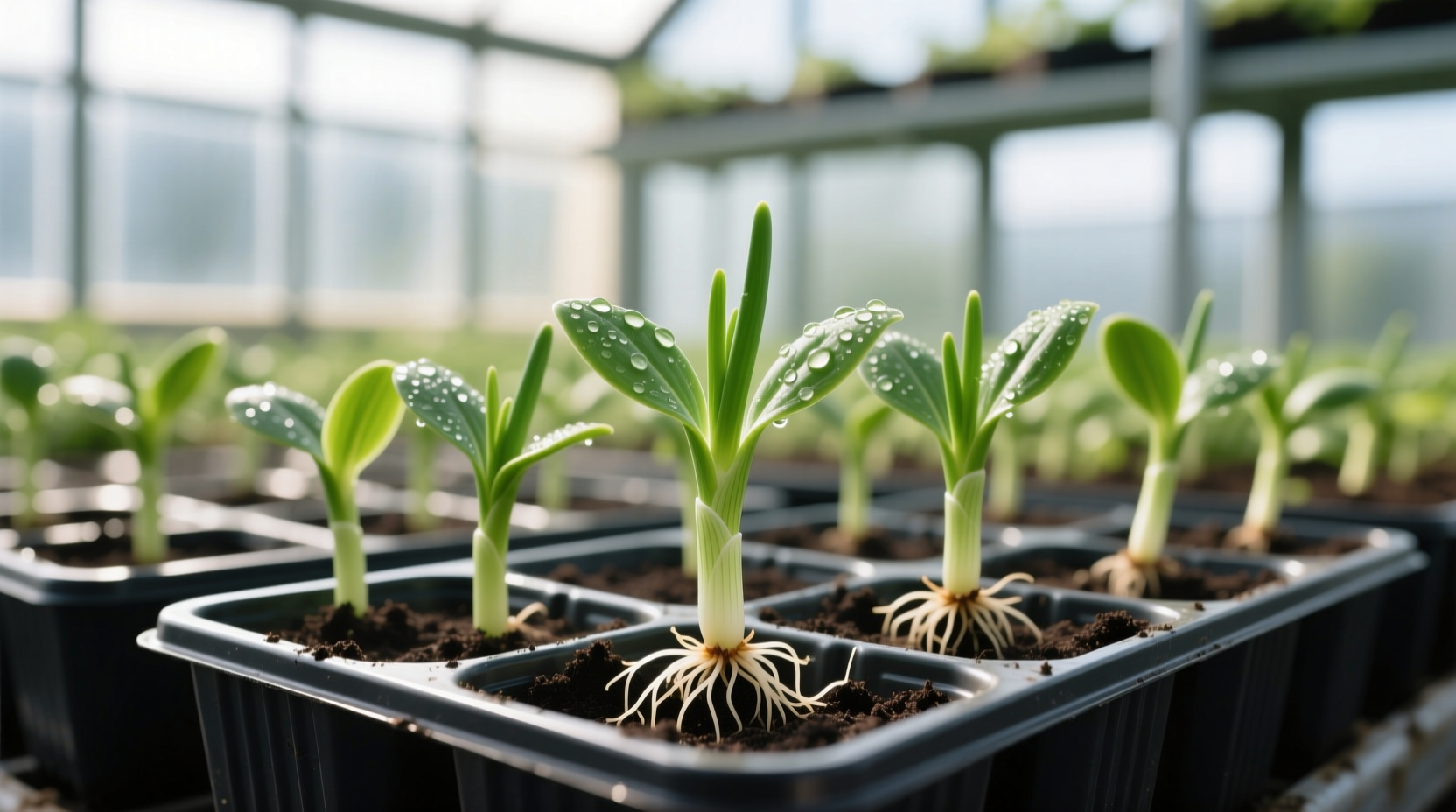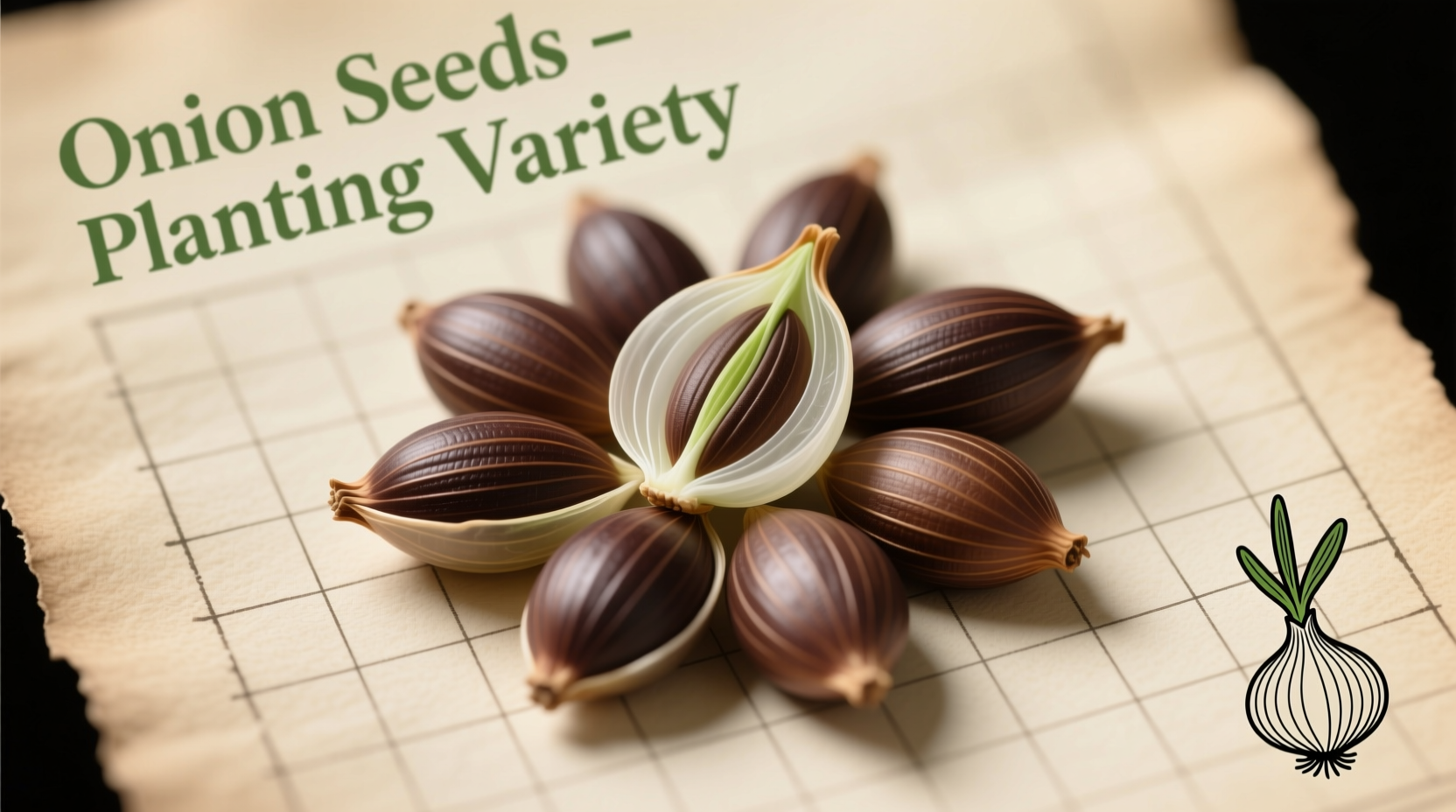Starting onions from seeds gives you the widest variety selection and most cost-effective approach compared to sets or transplants. Whether you're a beginner gardener or experienced grower, this comprehensive guide provides everything you need to successfully cultivate onions from seed to harvest.
Why Choose Onion Seeds Over Sets?
While onion sets offer convenience, seeds provide significant advantages for home gardeners. You'll access 3-5 times more variety options, avoid the risk of bolting common in sets, and achieve stronger root development. Seeds typically cost 30-50% less per plant than sets, making them ideal for larger plantings. The initial extra effort pays off with healthier plants and better storage potential.
Understanding Onion Seed Types and Varieties
Not all onion seeds perform equally in every climate. Selecting the right variety based on your daylight hours and growing season is critical for bulb development.
| Variety Type | Daylight Requirement | Best Regions | Germination Time |
|---|---|---|---|
| Short-Day (10-12 hours) | 10-12 hours | South of 35°N latitude | 7-14 days at 60-75°F |
| Intermediate (12-14 hours) | 12-14 hours | 30°-40°N latitude | 7-10 days at 65-75°F |
| Long-Day (14-16 hours) | 14-16 hours | North of 35°N latitude | 5-7 days at 70-75°F |
According to the University of Minnesota Extension, selecting varieties matched to your latitude prevents premature bulbing and ensures proper size development. Short-day varieties like 'Texas Super Sweet' work well in southern states, while long-day types such as 'Walla Walla' excel in northern regions.
Optimal Planting Timeline for Your Region
Timing your onion seed planting correctly makes the difference between small scallions and full-sized bulbs. Follow this regional timeline for best results:
- Northern Zones (3-5): Start seeds indoors February 15-March 1, transplant April 1-May 15
- Midwest Zones (5-6): Start seeds indoors February 1-15, transplant March 15-April 30
- Southern Zones (7-9): Start seeds indoors October 15-November 15, transplant December 1-January 15
The Old Farmer's Almanac planting calendar confirms that starting too early leads to bolting, while late planting results in small bulbs. For most regions, aim for 120-150 days from seed to harvest.
Step-by-Step Planting Process
Follow these research-backed steps for maximum germination and healthy seedling development:
Soil Preparation
Onions require well-draining soil with consistent moisture. Amend your garden bed with 2-3 inches of compost and work to a depth of 8-10 inches. Test your soil pH - onions thrive in slightly acidic to neutral conditions (6.0-7.5). If your soil tests below 6.0, add garden lime according to package instructions 2-3 weeks before planting.
Sowing Seeds Indoors
- Fill seed trays with sterile seed starting mix
- Sow seeds ¼ inch deep, spacing ½ inch apart
- Water gently with mister to avoid displacing seeds
- Maintain soil temperature at 70-75°F for optimal germination
- Provide 14-16 hours of light daily once sprouts appear

Transplanting to Garden
Transplant seedlings when they reach pencil thickness (about 8-10 weeks from seeding). Harden off plants for 7-10 days by gradually increasing outdoor exposure. Space plants 4-6 inches apart in rows 12-18 inches apart. Plant at the same depth they grew in containers - onions develop best when roots and lower stem remain underground while green tops emerge.
Common Challenges and Solutions
Understanding these frequent issues helps prevent crop failure:
Low Germination Rates
If fewer than 60% of your seeds sprout, check these factors:
- Old seeds (onion seeds remain viable 1-2 years)
- Soil temperature below 50°F or above 85°F
- Inconsistent moisture during germination
- Planting too deep (maximum ¼ inch)
The Oregon State University Extension reports that fresh onion seeds typically achieve 70-90% germination under proper conditions. Store unused seeds in an airtight container in the refrigerator for best longevity.
Thinning and Weeding
Onions struggle with competition. Thin seedlings to 4-6 inch spacing when they reach 4 inches tall. Hand weed carefully to avoid damaging shallow roots. Apply 2-3 inches of straw mulch after thinning to suppress weeds and maintain consistent soil moisture.
Harvesting and Storage Guidelines
Harvest onions when tops naturally fall over and begin drying (about 100-120 days after transplanting). Cure bulbs for 2-3 weeks in a warm, dry, well-ventilated area before storage. Properly cured onions store for 4-6 months at 32-40°F with 65-70% humidity.
According to the Penn State Extension, improper curing causes 70% of storage losses. Never skip the curing process - it hardens the outer layers and prevents rot during storage.
Maximizing Your Onion Yield
For larger bulbs and better storage:
- Fertilize with balanced 10-10-10 fertilizer when plants reach 6 inches tall
- Water consistently (1 inch per week) until bulbing begins
- Reduce watering as tops begin to fall over
- Avoid high-nitrogen fertilizers during bulb formation
Remember that onion seeds require patience - they take 4-6 weeks longer than sets to mature. But the wider variety selection and stronger plants make the extra time worthwhile for serious gardeners.
Frequently Asked Questions
How deep should I plant onion seeds?
Plant onion seeds ¼ inch deep in seed starting mix. Planting too deep reduces germination rates significantly. When transplanting seedlings to the garden, maintain the same depth they grew at indoors - with roots and lower stem underground while green tops emerge.
Can I plant onion seeds directly in the garden?
Yes, but only in mild winter climates (zones 7+). In most regions, starting seeds indoors 8-10 weeks before last frost gives onions enough time to mature. Direct sowing works best for overwintering onions in southern regions, planted in October-November for spring harvest.
How long do onion seeds remain viable?
Onion seeds typically remain viable for 1-2 years when stored properly. After the first year, germination rates drop by 20-30%. Store unused seeds in an airtight container in the refrigerator with a desiccant packet to maximize longevity. Test older seeds with a damp paper towel test before planting.
Why are my onion seedlings falling over?
Seedlings falling over usually indicates damping-off disease caused by fungal pathogens in cool, wet soil. Prevent this by using sterile seed starting mix, providing good air circulation, avoiding overwatering, and using a fan to strengthen stems. If already affected, remove damaged seedlings and apply a chamomile tea solution to remaining plants.
What's the difference between onion seeds and sets?
Onion seeds are actual seeds that grow into full plants, while sets are small, partially-grown bulbs. Seeds offer more variety options (300+ varieties vs 20-30 for sets), cost less, and produce stronger root systems. Sets are easier for beginners but have higher bolting risk and limited variety selection.











 浙公网安备
33010002000092号
浙公网安备
33010002000092号 浙B2-20120091-4
浙B2-20120091-4